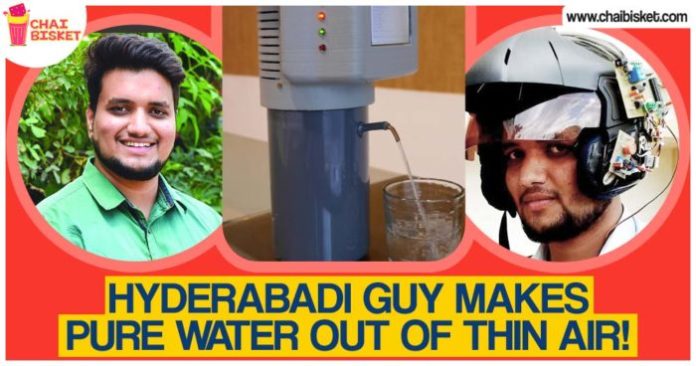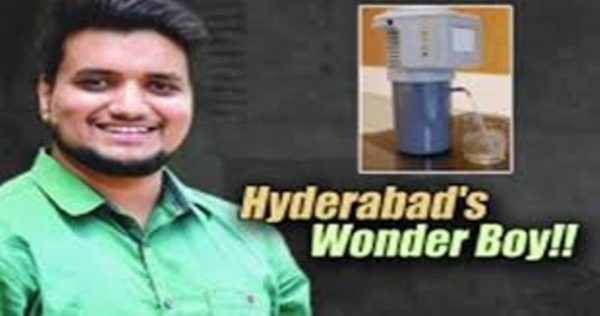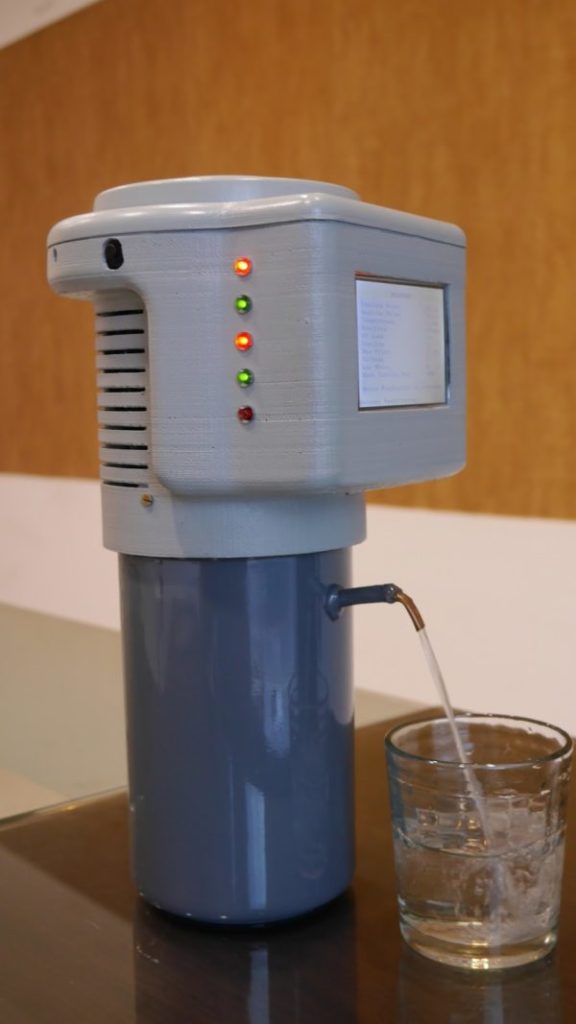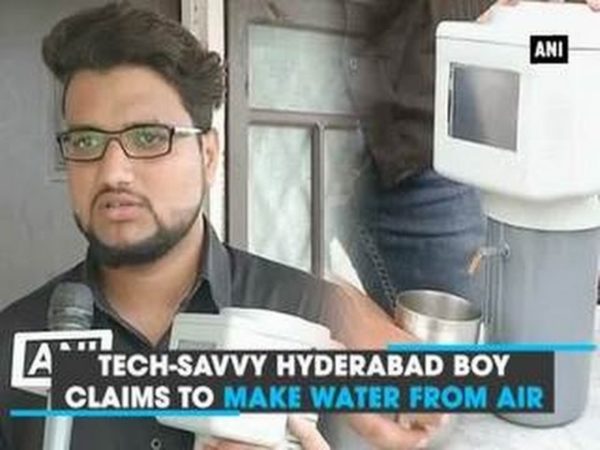
We are increasingly witnessing a surge in wonderful, but very simple innovations that aim to make our everyday life easy for us.
Many startups have concentrated on clean energy, furthering the step in the already available opportunity in the renewable energy sector.
Others too, have invested their knowledge in how to use alternative ways to create water, one of the basic necessities of life. Water is becoming scarce around the world. The United Nations has already sounded an alarm on an imminent water shortage.
According to the world’s governing body, more than 2.9 billion people in 48 countries will face water shortages in the next 10 years. Water experts say it could destabilize and jeopardize the existence of some countries.
Particularly with clean drinking water, the statistics are appalling. Over 1 billion people worldwide get their drinking water from unimproved sources including lakes, rivers, dams, springs and unprotected dug wells. The consequences of drinking from these sources is most likely death. Water-related disease kills around 840,000 people annually. Women and children are said to spend more than 140 million hours a day collecting usable water, which is more often than not from contaminated sources.
To solve this obvious problem, we need an impressive innovation that will ensure that we no longer fully depend on our traditional sources for water. And this is exactly what a young man from India has done.
Jawwad Patel is a 22-year old engineering student. He has invented a simple device known as Dewdrop, which is capable of trapping moisture in the atmosphere, creating 2 liters of clean and safe drinking water every hour.
Patel said the motivations for inventing the Dewdrop came from a disturbing situation he witnessed during his tour to a small town of Latur, in the state of Maharashtra. Residents in the town were living without clean drinking water. The Latur experience encouraged Patel to commence work on the Dewdrop, with it mind to help the Latur residents.
The Dewdrop is just a bottle that fills and refills by itself. The device sucks in air using a fan, filters dust, condenses moisture using the Thomson and Peltier effect, mineralizes water, and stores it for drinking. It is a 3D printed device.
Dewdrop weighs around the 900-gram mark, making it easy to carry. The device is powered by a 12V 6000 mAh Li-ion battery and generates around 2 liters per hour of potable drinking water. Even in desert areas, where the air is relatively dry, the Dewdrop can still generate up to 1.2 liters of water per hour. This is indeed very encouraging. Patel has devised the interface of his device to control its operation, including sensors which detect humidity, temperature and other factors.
In many places around the world, water becomes very scarce during the dry season. However, the hydrological cycle makes sure that a substantial quantity of water is present in the Earth’s atmosphere, in the form of water vapor anywhere. This makes Patel’s Dewdrop suitable everywhere in the world.
Apart from serving the water needs of people living in small villages, it is also suitable for people who trek mountains, camp in deserts and forests, fish in the sea, and work in mines or remote areas.
According to Patel, he is still modifying the device. He wants to incorporate a solar cell to power the device, eliminating the Li-ion battery. He will also include options that allow users the choice to have either their water hot or cold. Patel is also working on other inventions, including a fully powered solar car.
Patel is not the first person to invent a device that can trap water from the atmosphere. Recently, we published an article about a similar invention, developed by VICI-Labs and a team of researchers from the University of California, Berkeley. The device, named WaterSeer, is capable of generating up to 11 gallons of clean and safe drinking water from the atmosphere and is only powered by the wind.
You want to support Anonymous Independent & Investigative News? Please, follow us on Twitter: Follow @AnonymousNewsHQ
This article (Simple 3D Water Printer Capable of Creating 2 liters of Drinking Water Every Hour from the Air [Video]) is a free and open source. You have permission to republish this article under a Creative Commons license with attribution to the author and AnonHQ.com.










where can I buy one 😀 ?
you can’t it’s a scam just like the water seer and the fontus self filling bottle, all it is is a peltier effect dehumidifier only battery operated. at best he can produce about 1.8 liters of water a day in 100% humidity (assuming the battery lasts that long) heck just buy a run of the mill 1.6kw dehumidifier and if it’s humid enough where you are you’ll get about 1 liter an hour.
These water from air devices do not work. They are thermodynamically impractical or impossible. https://www.reddit.com/…/dave_from_eevblog_proves…/
https://www.youtube.com/watch?v=LVsqIjAeeXw
https://www.youtube.com/watch?v=aPvXnmBIO7o
wow, you guys are idiots if you think this is viable.
waterseer has been debunked as being a pile of crap already; it is not even worth being mentioned. I wonder how many litters of water that thermoelectric cooler can generate from 72 watts.
about 1.8 liters a day in 100% humidity
a 1.6kw/h dehumidifier can only manage between 20 and 26 liters a day in 100% humidity so yeah this isn’t going to work
Water plus carbon dioxide at 1472 degrees with an electrical current through it (electrolysis) will produce hydrogen and oxygen and carbon monoxide. The carbon monoxide and the hydrogen make fuel.
Carbon monoxide gas reacts with hydrogen gas to form methanol.
CO(g)+2H2(g)→CH3OH(g